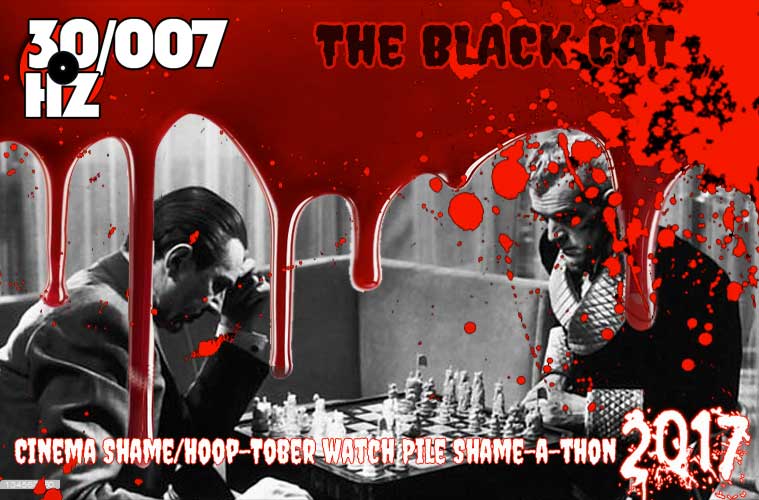
31+ Days of Horror. 33 Horror Movies. 33 Reviews. Hooptober Challenges and Bonus Tasks.
View my 2017 Cinema Shame/Hoop-Tober Watch Pile Shame-a-thon Statement here.
Nature Shame:
Long overdue for a rewatch shame.
Hoop-tober Challenge Checklist:
Decade: 1930’s
Pre-1970’s
#8. The Black Cat (1934)
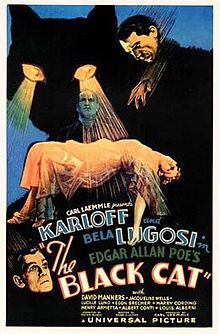 There’s a limitation to the kind of horror films I can watch while the wife goes to sleep. Silent are great. Gothic are good. Likewise for old Universals. “The bad” involve lots of screaming, slashing, and general gore.
There’s a limitation to the kind of horror films I can watch while the wife goes to sleep. Silent are great. Gothic are good. Likewise for old Universals. “The bad” involve lots of screaming, slashing, and general gore.
Trust me when I say you don’t want your wife waking up and seeing eyeball stabbings on the television. She will not “just go to sleep” and she will not abide.
So when I was scanning some acceptable options to fulfill some #31DaysOfHorror requirements, I landed on the Universal Bela Lugosi Collection because it was there and likely contained few examples sonic protuberances and few eyeball stabbings.
I last watched The Black Cat when I wrote a term paper on the inability to properly translate Edgar Allan Poe to film during my freshman year at Emory University. To clarify, I suggested that the only way to properly translate Poe was through silent cinema. I cited Jean Epstein’s La chute de la maison Usher from 1928 as the pinnacle of cinematic Poe.
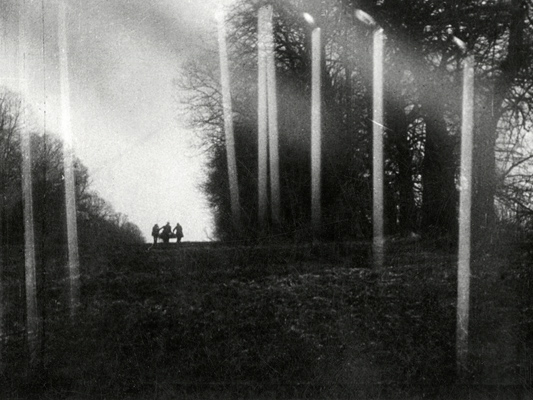
I wish I still had a copy of that essay. I bet I could learn a thing or two from the obsessive research of 19-year-old me. Alas, I can merely recall fondly the dozens of hours I sat up watching every cinematic adaptation of Edgar Allan Poe. They were many. Few stood out as honest representatives of the text. The short list contained not The Black Cat.
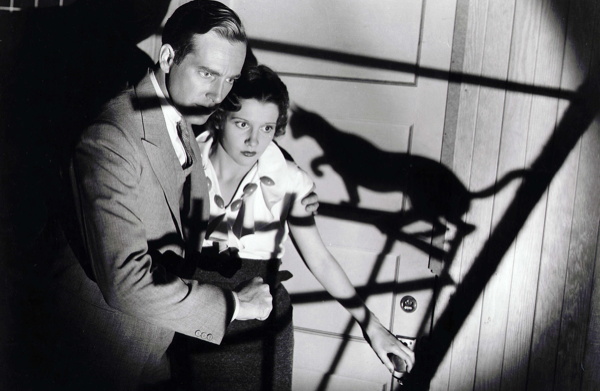
The Story
“Based” on Edgar Allan Poe’s The Black Cat, Edgar G. Ulmer’s 1934 The Black Cat concerns the scheming machinations between two psychologically scarred World War I veterans, Werdegast and Poelzig, played respectively by Bela Lugosi and Boris Karloff.
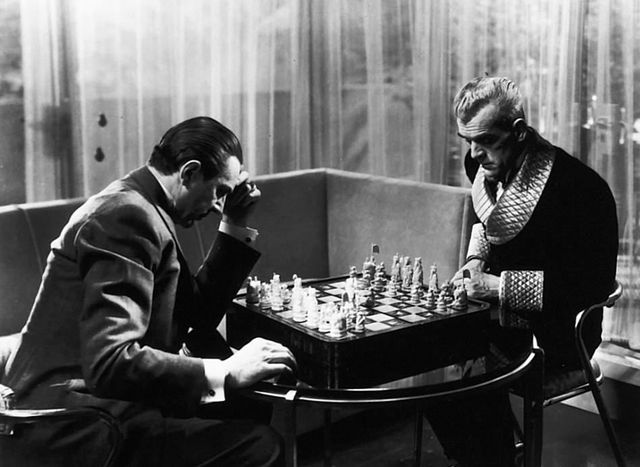
Here’s the maniacal backstory: Poelzig betrayed 10,000 of his men. He then built his gothic, shadowy mansion of excess over their mass grave. Werdegast, one of the battle’s survivors, has returned to the scene of the crime after 15 years of imprisonment to seek his revenge. It turns out that Poelzig also stole away Werdegast’s wife and daughter during his prison sentence, further fanning the flames of Werdegast’s fury. And then an innocent couple, mere vacationers, gets caught up as pawns in the duo’s sick and twisted bloodsport.
Ulmer’s direction embraces the supernatural and impressionistic elements of the palatial house itself as a main character in the drama. The elongated staircases, the madness contained within the visual bleakness of glass and cold steel. In many ways, the film reminded me of a reverse negative of the original German impressionists. Where there would have been shadow there was stark white. The collision of these dark themes and Poelzig’s vapid minimalism creates an imbalance in the viewer and a purgatorial mise en scene where lost souls congregate, one step away from hell itself.
Unless I’m utterly mistaken, the connection to Poe’s short story “The Black Cat” happens in the metaphorical connection between Poe’s black cat (that he walls up in the basement) and the 10,000 dead soldiers upon which Poelzig has built his house. The cat represents the human conscience, the regret that cannot be suffocated by time or tide or walls or floorboards.
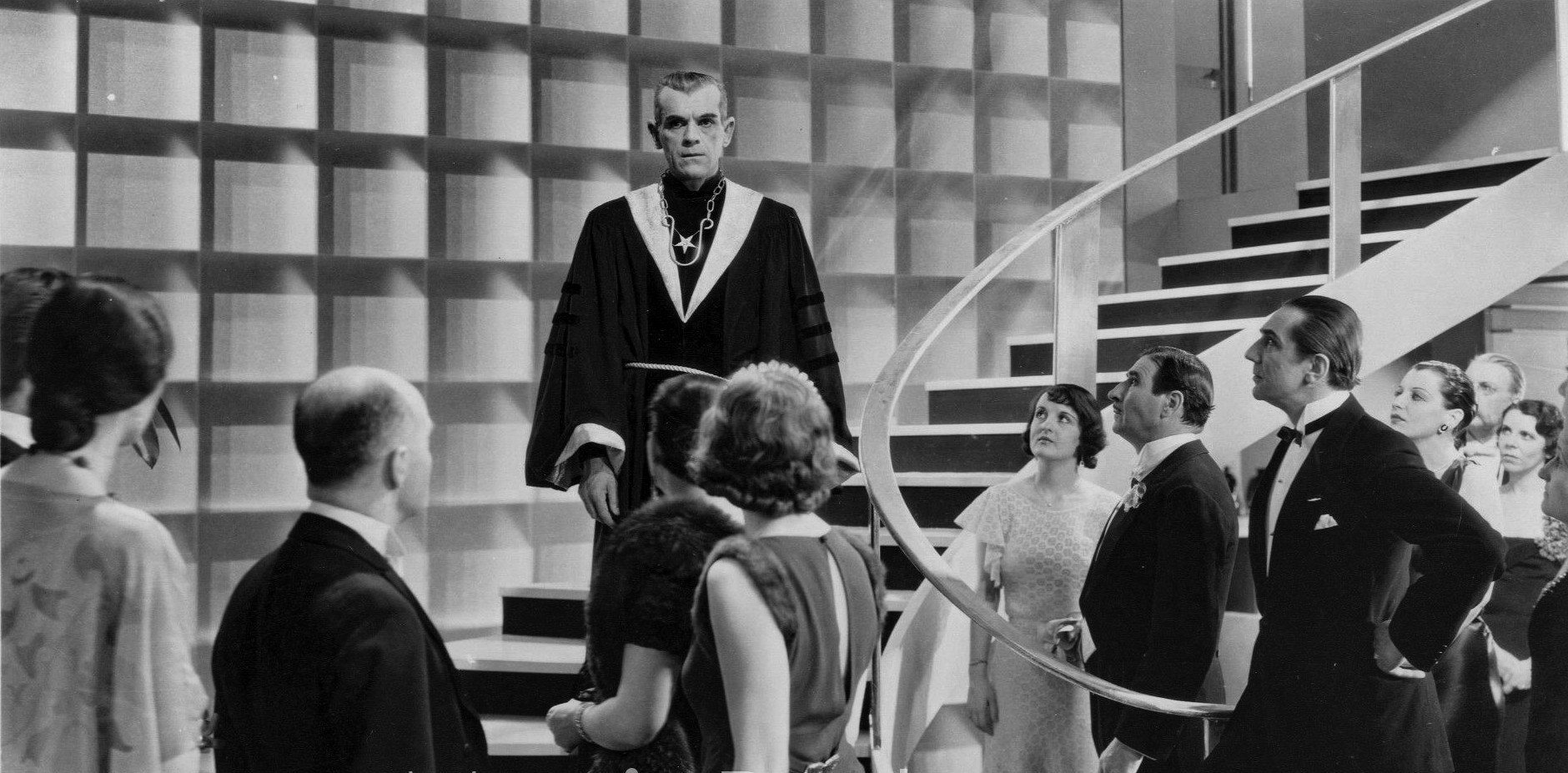
Meanwhile Ulmer relies on genre conventions to make the oddly weighty metaphor palatable for mass consumption. He presents Karloff’s Poelzig through the already established “mad scientist” trope. There’s a mute and cro-magnon man-servant. The innocent couple trapped in a situation beyond their control — which trades on the spooky house blueprint established in films such as The Old Dark House (1932), The Cat and the Canary (1929), etc.
Karloff, per his usual, turns in a terrific performance, but it’s the purposeful and restrained Lugosi that most surprises. As the two old warriors dance around each other, it almost feels as if The Black Cat is the most Universal horror of all the Universal horrors. Two masters of the genre facing off without makeup, without capes or monster trickery, within a house built of chiaroscuro and latent evil.
Audio/Visual notes:
The version included on the Lugosi collection could use some TLC. It’s hazy and without sharp contrast. It’s perfectly reasonable for a lesser Universal shocker, but The Black Cat deserves better. It deserves “monster” treatment. Far lesser films have been given a deluxe revitalization just because the title contained the name “Frankenstein.”
Final Thoughts:
Whether you view The Black Cat with an eye toward genre or an eye toward the symbolic placement of World War I and the failure of humanity there’s something for everyone in the family! It’s only when the appreciation of the two schools come together into a melange of respect and kitschy thrills that you’ll mine The Black Cat for all it’s worth. It’s not a successful Poe translation, but it is effective at using Poe’s text as an inspiration for something completely other.
30Hz Movie Rating:

Availability:
The Black Cat (1934) is available on the Universal Bela Lugosi Franchise Collection. The set also features Murders in the Rue Morgue, The Raven, The Invisible Ray, and Black Friday.
.
2017 Cinema Shame/Hoop-Tober Watchpile Shame-a-thon
#1. Caltiki The Immortal Monster (1959) / #2. The Devil Doll (1936) / #3. The Velvet Vampire (1971) / #4. Mill of the Stone Women (1960) / #5. The Initiation (1984) / #6. Poltergeist (1982) / #7. Night of the Lepus (1972) / #8. The Black Cat (1934)
2016 Cinema Shame/Hoop-Tober Watchpile Shame-a-thon
#1. Vampyros Lesbos / #2. A Chinese Ghost Story / #3. The Haunting of Morella / #4. Delirium (1972) / #5. A Lizard in a Woman’s Skin / #6. She-Wolf of London / #7. Son of Frankenstein / #8. Killerfish / #9. The Bride of Re-Animator / #10. A Bay of Blood / #11. The Seventh Victim / #12. The Fly (1958) / #13. The Fly (1986) / #14. Deep Red / #15. Dracula’s Daughter / #16. Day of the Animals / #17. The Unknown / #18. Kuroneko / #19. Komodo / #20. Tremors / #21. Tremors 2 / #22. A Nightmare on Elm Street / #23. A Nightmare on Elm Street 2: Freddy’s Revenge / #24. A Nightmare on Elm Street 3: Dream Warriors / #25. Tenebrae / #26. Salem’s Lot / #27. Veerana / #28. House of Wax / #29. The Bird with the Crystal Plumage / #30. Dead and Buried / #31 Ghost and Mr. Chicken



